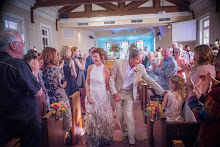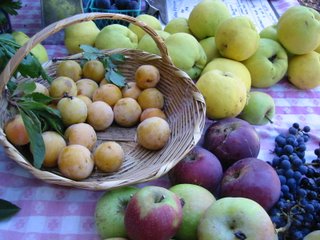LEARNING, PLEASURE AND FELDIE ROTATION, SMOOTH NECK
A baby doesn’t have a plan: (“ By six months I’ll learn to roll over and begin to crawl.”) Most times the child doesn’t even see crawling. All the giants are doing the walking thing, which is just some part of the world to the child, like trees and walls. It has no idea it might walk, or crawl or roll over or sit up someday. But the child loves to learn, loves to experiment and comes equipped with a brain whose main job is to make order out of chaos, to make sense out of nonsense, to discover ways of moving that bring that baby a more interesting and satisfying life. Hands and arms wave around, and suddenly, a hand gets to the mouth. The second time this happens, it is no longer chance and learning takes place and all sorts of possibilities open up: fingers to chew, stuff to bring to the mouth, lips to wiggle, sounds to play with, who knows, when learning takes place, the skies the limit.
Same with this Feldenkrais work. You won’t be taught the “right” way to do anything, unless you have a poor teacher, and there aren’t many. You will be given opportunity after opportunity to discover ways of moving that are natural and clear and pleasurable.
So let’s play with an example of learning, and discovering the blueprint of how we, as a species, evolved to move gracefully and pleasurably and efficiently, where efficiency isn’t some robot kind of thing, but less effort, no wasted energy, a smooth path of action, which is why this sort of efficiency blends over into pleasure: it feels great to do something as we are meant to move.
ROTATION.
One: Sit in a chair, comfortably and at the front edge of the chair at the same time. Feel your pelvis resting on the chair, and holding up your spine. Feel your head held up by your spine. Close your eyes and turn your head gently to the right and to the left. Does it feel different turning to one side than the other? Does one way seem easier?
Now come to the center and rest. Close your eyes. Breathe. Notice the moment and give your brain and nervous system a chance to rest. Enjoy the rests and enjoy the movements. This is your life.
Two: Now turn your head just to the left. And then back to the center. Do this a number of times and allow other parts of your self to come into your awareness. Your ribs. Your spine. Your breathing. The distribution of weight on your pelvis. The various vertebrae of the neck. Do this movement six to eight times, easily and with pleasure and awareness.
Rest, as per above.
(You can read one paragraph at a time. Recall it and do that much, or have someone read to you, or record this and then listen to your recording.)
However you do this, make the movements slow and full of awareness. Do each movement with attention and curiosity, letting go the “I know how to do this” way of thinking/being.
Also, and this is very important: keep the movement comfortable. Don’t go to your limit. Don’t stretch. Don’t try to impress some imaginary yoga teacher. Give information to your brain and your self by moving slowly and with awareness so you can feel, RIGHT NOW, IN THIS MOMENT, what it is like to be you and alive and doing this movement.
Three: Now, bring your left hand to your nose, and turn your head and finger and left arm to the left and back to the center a number of times. At least six to eight, but up to twenty or thirty if you are really enjoying this. Go slow. Mind-full means your movement is filled by your mind. Notice all the while as background grounding your breathing and your connection to gravity in your pelvis and your feet and your spine.
Enjoy this. Happiness now, remember? Why not? You don’t have to “get” anything out of this. Just move slowly and don’t strain and stress and you’ll be happy. If your neck is sore and you can only move it half an inch, fine, the brain is interested in differences, not in big deals. If you can’t move your neck even half an inch, maybe you should call a Feldenkrais practitioner like right this minute, checking out the Feldenkrais.com website to find one. Otherwise, proceed and enjoy.
Rest.
Four. Did I mention that you can do this in your mind, if your neck is really sore? That’s another possibility. Just visualize doing the lesson and you’ll get benefits and enjoyment. Okay: now put your left hand or some finger back on your nose and turn about half the rotation you have been doing. Look where you are looking and see what is halfway just now. It might change. Now, staying with your head facing as it is and bring your hand, at nose level ( if that’s hard, bring it lower) to the right so it comes to the front again, and then in front of your nose and to the left.
This is interesting, and maybe “difficult,” but only in the part of us that gets to learn. Goodie. Your head and eyes stay focused and fixed, and your hand goes to the left of your face and to the right, back and forth, easy and gently. Be nice to yourself. Be nice to your now. Your now is sacred. It’s you.
Feel this three different ways. Feel this as moving your hand from front to the left and back to the front. Feel this as moving your elbow right and left. And feel this as moving your shoulder right and left. Go slow. Breathe. Notice. Be here now. Enjoy.
Rest.
Five. Put the hand at the nose, turn halfway again, and leave the hand there, while turning the head, your head, your one and only noggin from facing forward to facing to the left. I.e. keep the moving on your left side, and just move your nose right and left, and leave your hand at the halfway point.
Never do this more than is comfortable and enjoyable. If you get in stress after four movements, rest and then do a few more. Always do at least six, and as I said before you can do twenty or thirty if you wish. With all the movements explore what else you can bring into this present based world: spine, ribs, shoulder blade, jaw, breathing, arm bones, pelvis, legs, feet.
Rest.
Six: Bring your hand to your nose, or mouth, and move to the halfway place. Stop. And only move your eyes left and right. Breathe. Make this easy. And aware. And enjoyable.
Rest.
Seven: Come to halfway again, and look at what you see in that direction. Keep your eyes focused that way and move your hand and head back and forth, rotating right and left.
Rest.
Eight. Come to halfway with hand and head, and move your head to the right and your hand to the left, and your head back to the left and your hand to the right. Go slow. Sense all of this. Breathe. If it’s “hard” then learning is taking place. Learning is fun, though sometimes frustrating at first.
Rest.
Nine: Extra credit and fun. Do the previous movement, and follow your hand with your eyes. So, head left, hand right, eyes left in one part of the movement, and then head right, hand left and eyes right in the next. Go slow. Do a little tiny movement. Small is good. Slow is good. The brain loves learning and notices difference. It doesn’t want big deals. It doesn’t want you to hurt yourself. Rest if you are frustrated. Do a very small movement, very slowly and learn not only how to do this, but how to breathe with and enjoy this.
This is creating new neural pathways in your brain. This is real learning, as opposed to sitting around and letting someone’s words blah, blah into your head.
Rest.
Ten: turn your head to the right and left. Which is easier? Which way goes more:? Which way is softer and more pleasant.
Rest.
That’s learning, that’s enjoyment, that’s a big chunk of what a good life is all about.








